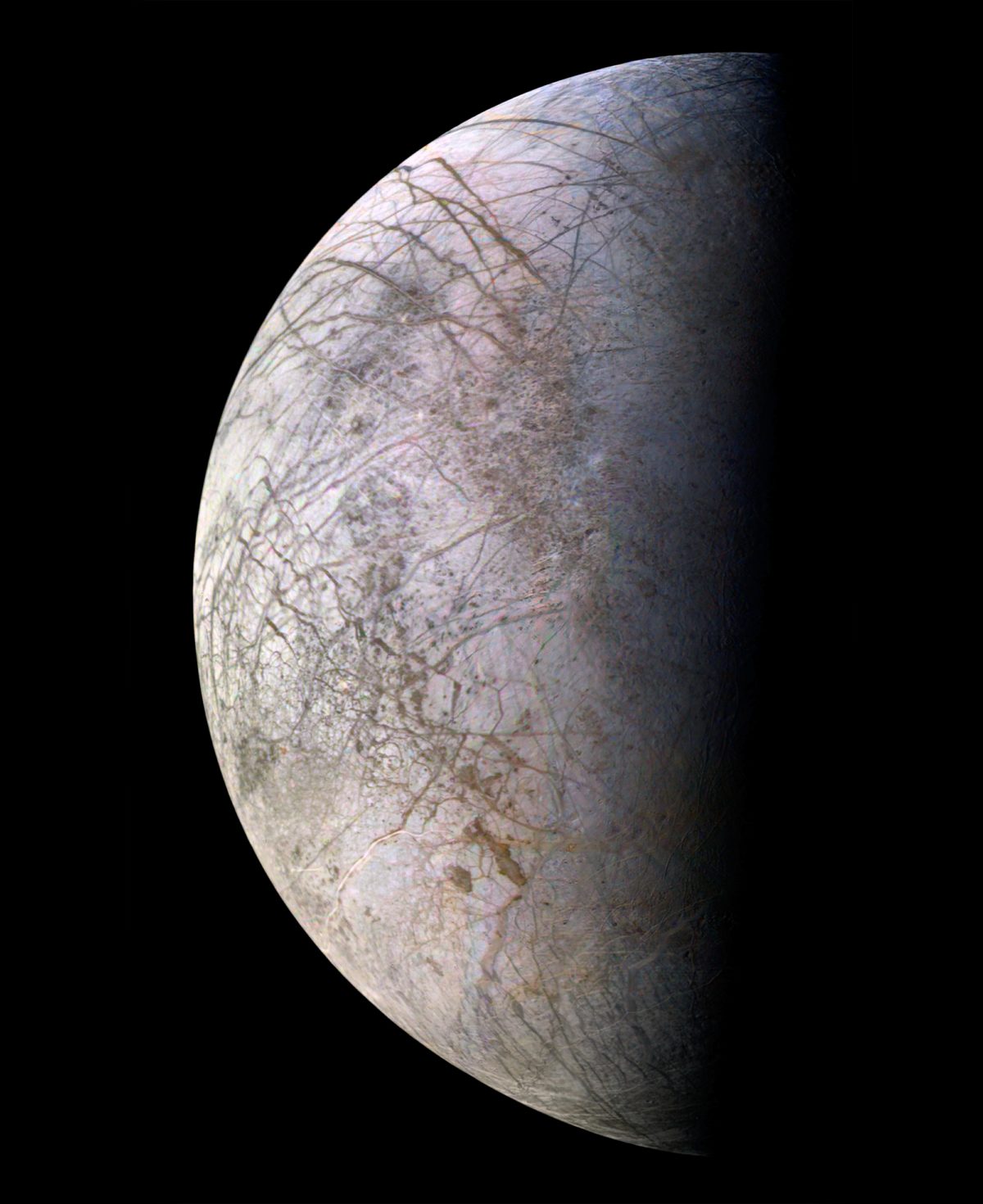The Downlink • Nov 13, 2020
A dwarf planet, a rogue planet, and a glow-in-the-dark moon
You love space, now take action
This weekly newsletter is your toolkit to learn more about space, share information with your friends and family, and take direct action to support exploration. Anyone can subscribe at planetary.org/connect to receive it as a weekly email.
Mission Briefings


Take a spin around the white spots on dwarf planet Ceres. A new video created using images captured by NASA's Dawn spacecraft shows an area on Ceres 15 kilometers wide where salty liquids have bubbled up from a subsurface reservoir. These spots are located in the Occator crater (pictured). Image credit: NASA/JPL-Caltech/UCLA/MPS/DLR/IDA.

SpaceX is launching astronauts again on Sunday. This flight will send NASA astronauts Shannon Walker, Victor Glover, and Mike Hopkins, and Japan Aerospace Exploration Agency astronaut Soichi Noguchi to the International Space Station for a 6-month stay. Our preview guide has all the details, including a new article on why we need both NASA and SpaceX. You can watch the NASA TV coverage of the launch at planetary.org/live on Sunday 15 November at 4:27 p.m. PT / 7:27 p.m. ET / 00:27 UTC (Monday). The launch was originally planned for Saturday and postponed due to predicted high winds.

NASA administrator Jim Bridenstine will step down in January. Bridenstine said NASA has a better chance of thriving under new leadership, and that he would resign regardless of whether or not U.S. President-elect Joe Biden asked him to stay.

NASA and the European Space Agency are ready to return samples from Mars. That’s the conclusion from an independent review of the plan to retrieve samples collected by NASA’s Perseverance rover. The review suggested NASA consider 2028 the likely launch date rather than 2026.
From The Planetary Society


What happens when a planet has no star? The recent discovery of an exoplanet wandering the galaxy on its own prompts many intriguing questions: Where did it come from? How did it form? And is it even worth considering the possibility that it might be habitable? Radek Poleski, one of the astronomers who made this discovery, joins Mat Kaplan in this week’s Planetary Radio to discuss the rogue planet and the exciting possibilities it might hold. Pictured: An artist's impression of the gravitational microlensing effect that allowed Poleski and his team to find the free-floating planet. Image credit: Jan Skowron/Astronomical Observatory, University of Warsaw.

The dust is settling in the aftermath of the U.S.'s 2020 election season. What does it mean for space? The latest article from Planetary Society chief advocate Casey Dreier explores some broad implications for NASA's overall direction and, in particular, consequences for The Planetary Society's 3 main areas of interest: planetary exploration, the search for life, and planetary defense.

Our holiday gift guide is here! With the help of our members and readers like you, we’ve put together a gift guide for people who love space. Whether you celebrate a gift-giving holiday or are just always on the lookout for fun space stuff, check out our list of cosmically cool clothes, jewelry, toys, books, and more.

Mark your calendars for the 2029 asteroid Apophis flyby! On 13 April 2029, a near-Earth asteroid named Apophis will pass as close as 30,600 kilometers (19,000 miles) above the Earth—closer than geostationary communications satellites. Fear not—we know that the asteroid won’t impact our planet. But this event will create unprecedented opportunities to raise public awareness of the asteroid threat. Planetary Society chief scientist Bruce Betts and chief advocate Casey Dreier presented a paper on this opportunity at last week’s Apophis T-9 Years workshop.
What's Up

In the early evening sky, look for bright Jupiter with Saturn to its left in the western sky. On 18 November the crescent Moon will shine by their side. Reddish Mars shines further to the east. And in the predawn sky, look for super-bright Venus with Mercury below it on the eastern horizon. Learn more at planetary.org/night-sky.
It’s a launch party!

We are proud to be partnering with Space for Humanity for their celebration of the SpaceX Crew-1 launch this Saturday 14 November. Join special guests at their virtual launch party from 7:00-9:00 p.m. ET. Pictured: The crew that will be launching to the International Space Station on Saturday. Image credit: SpaceX.
Wow of the Week

As if it weren’t a cool enough world already, scientists now think that Europa glows in the dark. Jupiter bombards the icy moon Europa with radiation that interacts with salts to release energy that humans would see as a faint nighttime glow, new NASA findings suggest. The upcoming Europa Clipper mission might be able to see the glow firsthand. Pictured: An artist’s impression of a glowing Europa. Image credit: NASA/JPL-Caltech.
Do you have a suggestion for the Wow of the Week? We’re looking for space-related art, music, gadgets, quotes, fashion, burning questions, brief sci-fi passages, or anything else that will make our readers go “Wow!” Send us your idea by replying to any Downlink email or writing to [email protected], and please let us know if you’re a Planetary Society member.


 Explore Worlds
Explore Worlds Find Life
Find Life Defend Earth
Defend Earth



